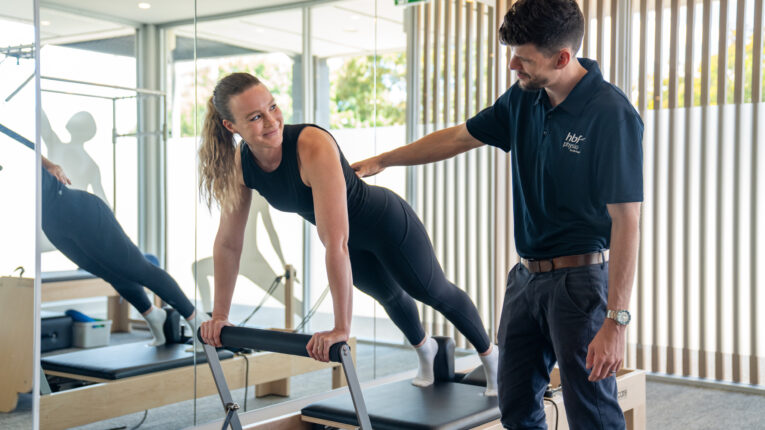When to see a physio: Key signs you need treatment

Struggling with aches and pains? Have a sports injury or need to increase your mobility?
Physiotherapy might be the kickstart you need to bounce back.
Physiotherapy offers a range of benefits for people of all ages and with various health conditions, but many aren’t sure exactly how physiotherapy can help.
Through targeted techniques, physio helps prevent, manage and treat injuries, disabilities and physical challenges, all while improving your body’s movement and making everyday activities easier.
Types of physiotherapy
Different types of physios are designed to address specific needs. From everyday pain relief to rehabilitation, physio isn’t a one size fits all therapy.
Types of physiotherapy include:
- Exercise physiotherapy
- Musculoskeletal and back pain physiotherapy
- Physiotherapy for recovery post-surgery
- Paediatric physiotherapy
- Posture correction physiotherapy
- Physiotherapy for rehabilitation and pain management
- Workplace physiotherapy
- Women’s health physiotherapy
What can physio help with?
Is your body signalling that it needs some extra care? A physio may be able to help.
Ongoing or chronic pain
Pain is a leading reason people visit physiotherapists, whether it’s a sudden twinge, general aches and pains or something more severe.
Physios use methods like heat therapy, massage and targeted exercises to identify the source of pain and create a plan that reduces aches and pains and helps you move more freely.
Headaches
If you’re battling a persistent headache, you’re not alone — more than 7 million Australians suffer from tension headaches, and 4.9 million deal with chronic migraines. A physio appointment might help.
Many headaches stem from muscle tension in the neck, shoulders and upper back. Physio techniques like manual therapy and massage can help relieve muscle pain and ease that tension.
Restricted mobility
Restricted mobility can be frustrating, making simple tasks feel challenging and limiting your activities. But a visit to the physio can help change that.
Targeted exercises can boost your range of motion, strength and flexibility, helping you to move more easily and comfortably.
Poor balance
Poor balance can make everyday activities like walking, climbing stairs or even standing still feel challenging and unsafe. It’s often caused by weak muscles, inner ear issues or poor posture.
But with the right exercises and techniques, physiotherapy can help improve stability and reduce the risk of falls.
Injury
Whether you’ve sprained your ankle, pulled a muscle or are recovering from surgery, a physio can speed up your recovery.
Treatments might include strapping, exercise programs to improve movement, strength and flexibility and education about further injury prevention.
Recovering from surgery
Recovering from surgery can be tough, often leaving you feeling weak and frustrated. But physiotherapy can speed up healing.
A physio will create a personalised plan to help you rebuild strength, improve mobility and reduce pain. They’ll guide you through your recovery and help you avoid re-injury along the way.
Reduced strength
If you’re finding it harder to lift heavy items, carry your groceries or just get out of your chair, it could be a sign of reduced muscle strength.
A visit to the physio can help sort this out by creating a plan to boost your strength.
Poor posture
If you’re one of the 46.9% of Australians hunched over a desk all day, you likely have poor posture. A physio will help you stand tall.
Physio strengthens the muscles supporting your spine, shoulders and core, while easing any tension in the chest and lower back that causes slouching.
Let HBF Physio help
If you’re dealing with discomfort or difficulties due to an injury or medical condition, you can rely on the support of our HBF Physio team.
Click here to book an initial appointment at one of our clinics.





